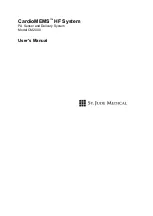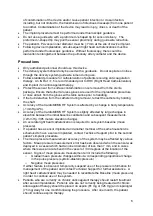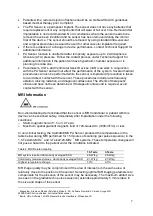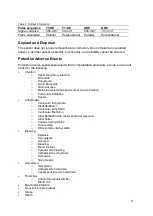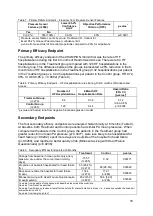
of contamination of the device and/or cause patient infection or cross-infection,
including, but not limited to, the transmission of infectious disease(s) from one patient
to another. Contamination of the device may lead to injury, illness, or death of the
patient.
•
The implant procedure must be performed under fluoroscopic guidance.
•
Do not use a guidewire with a preformed J-shaped tip for sensor delivery. The
preformed J-shaped tip may pull the sensor proximally during guidewire retraction.
•
The patient’s PA vessel inner diameter must be > 7mm at the site of device implant.
•
Following device implantation, all subsequent right heart catheterizations must be
performed under fluoroscopic guidance. Without fluoroscopy, there could be
inadvertent entanglement between the pulmonary artery catheter and the device.
Precautions
•
Only authorized personnel should use this device.
•
The delivery system should only be used with a guidewire. Do not aspirate or infuse
through the delivery system guidewire lumen during use.
•
Follow standard procedure for catheterization of patients receiving anti-coagulation
therapy. An INR of <1.5 is recommended prior to RHC (Right Heart Catheterization)
and implant if on anticoagulant therapy.
•
Protect the sensor from surface contamination once removed from the sterile
package. Ensure that either talc-less gloves are used for the implantation procedure
or rinse all talc from the gloves with sterile saline prior to handling.
•
If the hub detaches from the catheter during removal, retract the catheter by holding
the shaft.
•
Accuracy of the CardioMEMS HF System is affected by a change in body temperature
(-
1mm Hg/ΔºC).
•
Accuracy of the CardioMEMS HF System is slightly affected by large changes in
elevation between the initial baseline calibration and subsequent measurements.
(+2mm Hg / 305 meters elevation change).
•
An accurate right heart catheterization is required to set system baseline (mean
pressure).
•
If a patient has a sensor implanted and another member of the same household is
scheduled to have a sensor implanted, contact Technical Support prior to the second
patient’s implant procedure.
•
The mean pressure measurement accuracy of the system may be affected by various
factors. Mean pressure measurement error has been observed when the sensor was
deployed in a vessel which had an inner diameter of less than 7 mm, and in cases
where there was an acute bend in the vessel of >30 degrees at the location of the
sensor. Signs of mean pressure measurement error include the following:
o
Gradual mean pressure changes without a corresponding proportional change
in the pulse pressure (systolic-diastolic pressure)
o
Negative mean pressures
If either feature is observed, temporarily suspend use of the pressure information for
management of the patient and contact Technical Support for further assistance. A
right heart catheterization may be needed to recalibrate the Baseline (mean pressure)
in order to continue use of the system.
•
Patients who are currently on chronic anticoagulant therapy should restart treatment
after sensor implantation. Patients who are not currently being treated with chronic
anticoagulant therapy should be placed on aspirin (81 mg or 325 mg) and clopidogrel
(75 mg) daily for one month following the procedure. After one month, the patient
should continue aspirin therapy.
6

